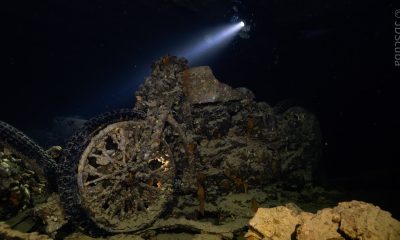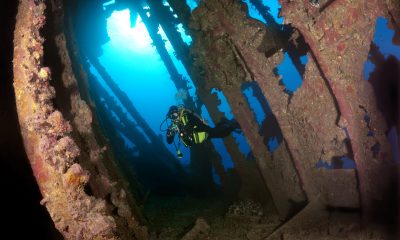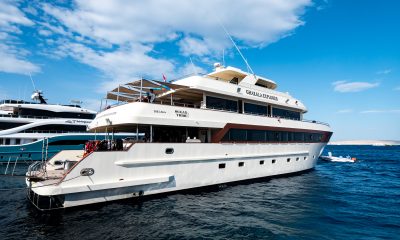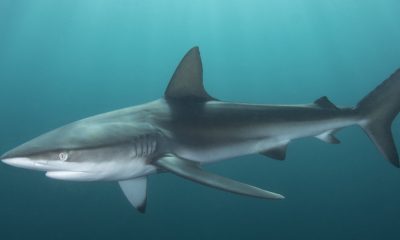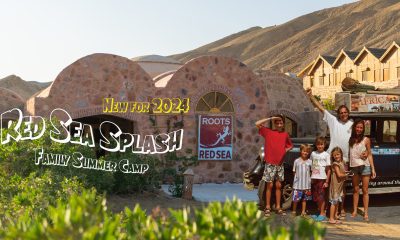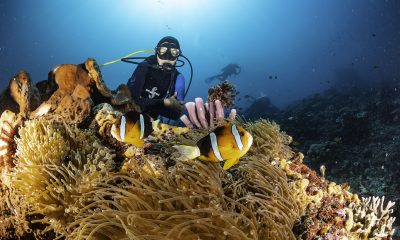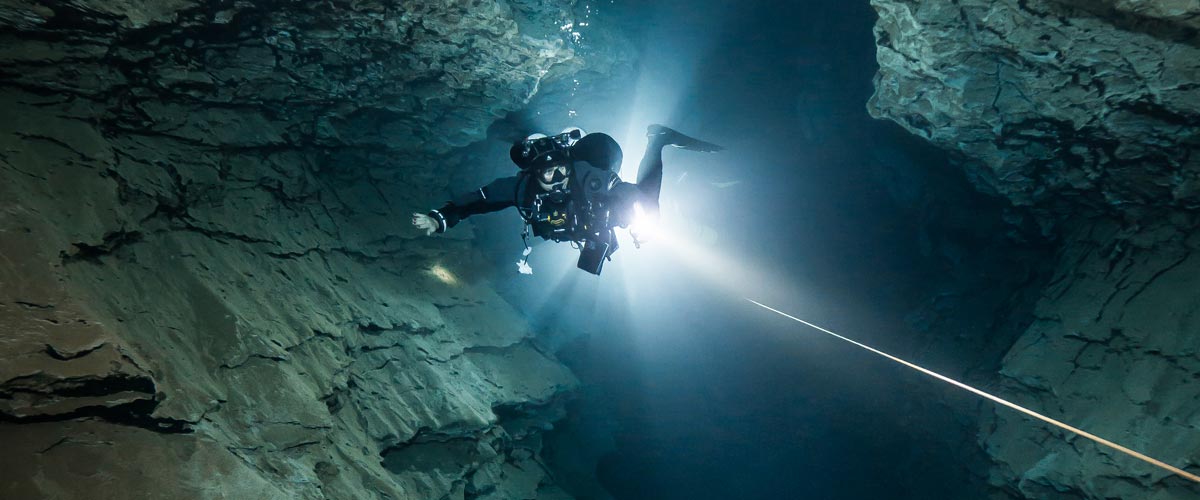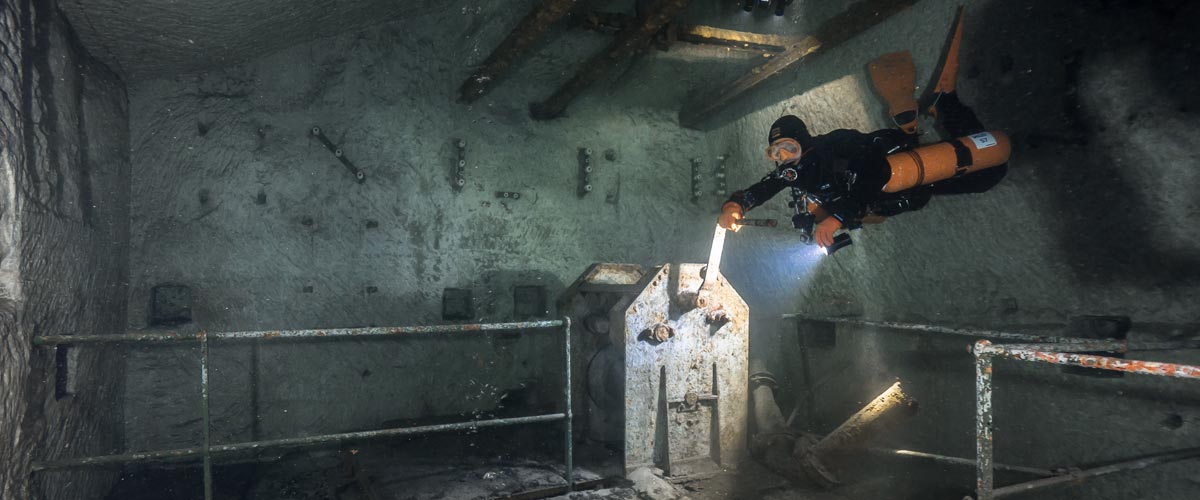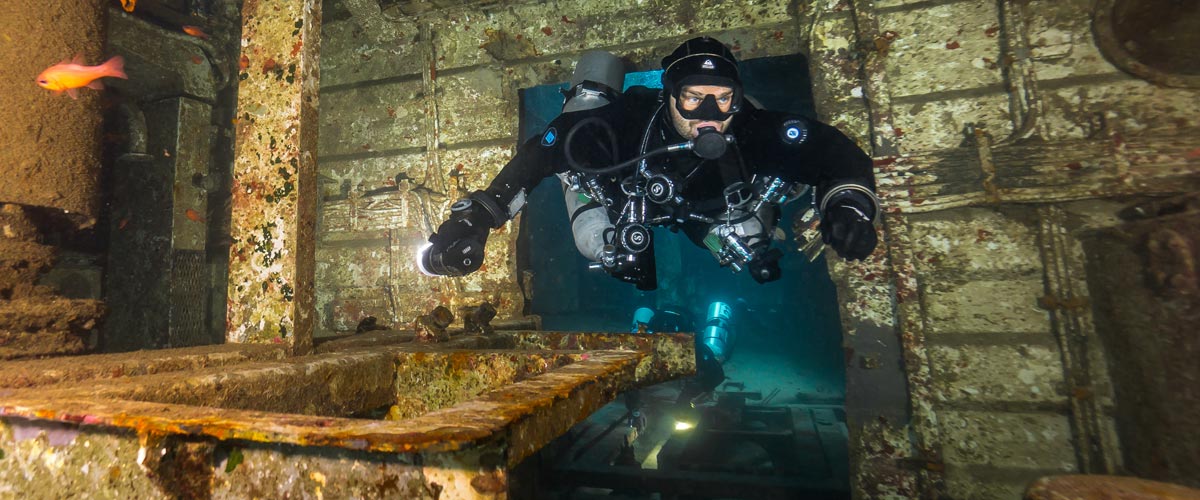Dive Training Blogs
What’s your favourite dive site?
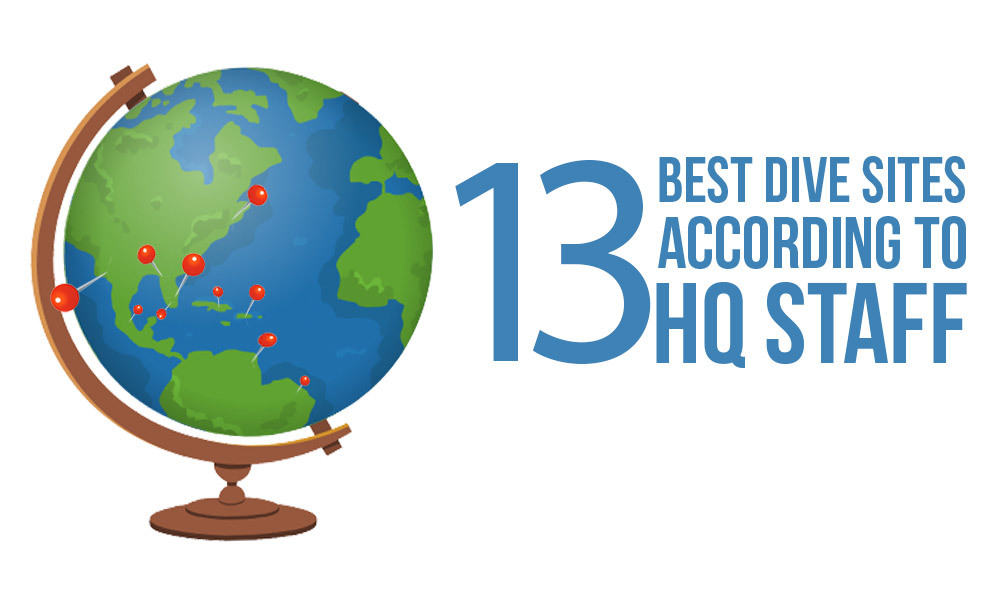
Top 13 Dive Sites According to SDI/TDI/ERDI Staff
by Cris Merz
I was asked to put down a list of the top ten destinations in the Caribbean according to Yelp and decided against it. You can “Yelp” it yourself.
Instead, I wanted to make this article a little more personal, so I went from office to office here at TDI/SDI/ERDI World HQ and asked everyone what their favorite dive site was. Everyone has a favorite dive site or destination and there are usually different reasons for it; historic and sentimental reasons, the awe of the magnificence and amazing, or simply the fact that it had an impact on them personally, career wise or emotionally that was a life changer. As I asked the question, I gave no one time to think about the answer – “First place that pops into your mind – GO!!!” I commanded.
“My Favorite Dive Site” according to World HQ’s Staff, in their own words
Sean Harrison – Nigali Pass, Fiji
Nigali Pass is a narrow passage through a barrier reef on the island of Gau. The site is dived on an incoming tide, and when the tide is right, it’s a fun ride that is action packed. The drop is just on the outside of the reef and as you drift in through the narrow pass (maybe 150’ wide) you are greeted by every possible sighting known, and unknown, to the South Pacific marine life. On these dives there were: schools of Mobula Rays, Potato Groupers, schools of every Anthias there is, Garden Ells, nudibranchs, corals (hard and soft), and sharks – you name the shark and it would be in there. The sharks were of course the biggest attraction.
The walls of the pass were like stadium seating and as divers tucked into their spot on the walls, the sharks got comfortable – and I mean really comfortable. Due to the current flowing through, the sharks were able to swim slowly ahead and pass within an arm’s reach. At the end of the dive you left your spot on the wall and drifted over into the lagoon over a shallow patch of the most beautiful Cabbage Patch Coral I have ever seen teeming with even more marine life.
Stephanie Miele – Fort Wetherill, Rhode Island
Fort Wetherill brings back many fond memories for me. It was where my first open water dives were done while in college and where I met my husband. Since those initial open water dives I have been back to Fort Wetherill with my own students, with fun dives with my husband and now I am taking my son to experience the area as well. The water temperature is chilly but I have been able to get some great visibility and experience some very playful seals while diving, which was epic. All in all it is a great site for open water divers, those looking to practice skills, and a very cool pleasure dive.
Ryan Conery – Lowrance, Pompano, Florida
Sitting upright in 210’ of water is the Lowrance. This 420’ Canadian freighter was sunk as an artificial reef off the coast of Pompano Beach, Florida in 1984. Throughout her life, she had several names including the Ciudad de Cali and the Rio Amazonas. Hot dropping this wreck is an exhilarating feeling. As you descend, it seems to take forever. You continually wonder whether or not you missed it. Finally, at the last second, the massive ship appears out of nowhere. Teeming with life, schools of Amberjack encircle you. Giant Goliath Grouper pack into the cargo holds. The ship is littered with swim-throughs and penetration opportunities, but you have to weasel your way past the Grouper to fit down the narrow hallways. Barracuda stealthily suspend themselves above the deck, looking for some bait that strays too far from the shoal. This deep wreck houses an enormous diversity of pelagic species. Make sure to bring a cutting device as fishing line drapes across the super structure. Hands down, it is my favorite dive.
Darren Pace – Isla Mureres, Mexico
Hola Amigo! Okay, so this isn’t an actual scuba dive site, but swimming with the whale sharks off the coast of Isla Mureres is a once in a lifetime experience. Every year, the world’s largest concentration of whale sharks migrates off the Yucatan Peninsula in the summer months. These gentle giants – which can reach 40ft (12m) or as large as a school bus, are hungry migrators, feeding on plankton and small fish eggs. This unique time and location presents an ideal opportunity to swim with these docile creatures up close and in their habitat. If you’re ready to scratch whale sharks off your bucket list, come down to the Yucatan and spend a day snorkeling with these beautiful fish. Got a couple more days? Drive south about an hour and swim/dive the cenotes in Tulum, and don’t pass up the opportunity to eat great authentic Mexican food along the way. My vote is the fajitas, yum!
Jon Kieren – Indian Springs, Florida
Nestled in the quiet woodlands of Crawfordville, FL is beautiful YMCA owned Camp Indian Springs. The campgrounds were built around the 56 metre/185ft diameter spring pool, which serves as the entrance to my all-time favorite dive site.
The cave system at Indian Springs is gigantic, both in penetration distance and passage size. Best enjoyed on a scooter and rebreather, the majority of the bright white cave ranges from 30 metres/140 feet to 53 metres/175 feet deep until 1300 metres/4300 feet back where the cave opens up to a massive room named the “Wakulla Room”. The bottom of the Wakulla room is at approximately 75 meters/250 feet, where the passage continues further back and even deeper. The end of this beautiful cave has yet to be found, and is currently being explored.
My first dive at Indian was with my favorite dive buddy, my wife Lauren, and our good friends Dan, Jon, and Sandra for a photo shoot. Subsequent dives have been progressively larger dives further and further back. Our last dive there we explored back beyond the Wakulla Room to the Stargate Room, at a maximum depth of 84 meters/275 feet and a total run time of approximately 4 hours including decompression.
Special permission, Full Cave and Trimix certifications, and a guide are required to dive this site/ More information can be found on the Cave Connections website.
Lauren Kieren – North Star, St. Croix, USVI
My first thought for my favorite dive site was Indian Springs, in North Florida. After giving Cris my response, I quickly received a frustrated sigh followed by some strange grumbles. It seems that my answer was not suitable since Jon Kieren gave the same response earlier that day. After a few minutes of banter with Jon trying to get him to pick another site, I settled to discuss my second favorite dive site, North Star in St. Croix, USVI.
North Star was named after the old sugar plantation on shore. Accessible by land or boat, the site starts around 7 meters/25 feet plunging down a beautiful dramatic wall over 600+ meters/2000+ feet. Whether you are snorkeling, on the first dive of your life, a technical diver or anything in between, this site has something for you. For example, on a deep technical dive, you can find a large beautiful cavern around 82 meters/270 feet. Inside this cavern, there is a vertical chimney rising 15 meters/50 feet through the wall, opening at the top. While decompressing and making your way to the shallows along the wall, you are likely to see schooling fish, barracuda, eels, sharks, eagle rays, the occasional pod of dolphins, seahorses, nudibranchs and more. You can even find large Danish anchors embedded in the coral! Up in the shallows lies a field of soft and hard corals with even more marine life to see. This is certainly my favorite reef dive and second favorite dive site.
Dennis Pulley – Bonaire, Netherland Antilles
Bonaire is commonly referred to as one of the “ABC” (Aruba, Bonaire, Curacao) islands in the Caribbean, just off the coast of Venezuela. I fell in love with Bonaire the first time I visited there in the early 90’s. It is such a relaxing and laid back location to visit and affords topside sights to see in addition to the diving. Washington Park with parrots and flamingos is a sight to behold!
While you can dive off of boats, the shore diving is so easily accessible that I prefer it over the boat diving. Imagine grabbing a cylinder, setting up your system on the dock, walking to the end and jumping into crystal clear water that is 5 metres/15 feet to 6 metres/20 feet deep. You make a very short swim to the top of a wall that drops to over 30 metres/100 feet.
The wall is teeming with marine life and you can quite literally spend an entire trip shore diving from your hotel area. Even the wreck of the Hilma Hooker located in 30 metres/100 feet of water can be easily reached from the shore.
Sally Camm – Tunnels, Jupiter, Florida
Close to home and easily accessible by boat, Tunnels has become my new favorite site (the previous being the OJ Walker in Lake Champlain). One of the cool things about Tunnels are the swim throughs (hence its name) and even someone like me, who is claustrophobic, can partake in the larger ones.
The top of the reef is filled with a variety of colorful corals and schooling fish; and if you swim beside it you will see a multitude of large sea turtles resting under the shelf. But don’t be so focused on the reef that you miss the excitement, because if you keep an eye out to the east and west of the ledge you will more than likely see Goliath Grouper, many sharks, and if you look closely – stingrays. Take your time and you will really be able to enjoy the abundance of life there.
Tunnels tops my list at #1 because it’s an “all in one” spot for seeing an assortment of large marine life, and averaging about 70ft/21m deep, it is a pretty nice, easy dive.
Paul Montgomery – Madison Blue, Florida
Seriously? You want me to pick one? How about one region? Will that work? All joking aside, my favorite dive site and favorite all time dive was at Madison Blue in Lee, Florida. And, it was my first dive there that sticks in my memory as if it were yesterday. My cave instructor had taken me there to be my “first dive on my own”, so my cave buddy Rob and I were really stoked. I had the reel. After a decent pre-dive briefing between us, we entered the basin and entered through the “Rabbit Hole”. After all, no need to use that giant opening right next to this restriction, let’s follow Alice. Nice little tie-off and off we go. Off we go just a little low and to the outside! From here, let me fill you in on some details. This dive was probably around 1997 or so, when Madison Blue was managed/operated privately. The management had taken over what had previously been a dumping ground and transformed it into an amazing dive site. Parking, tables, stairs to the basin, landscaping. Everything a cave diver could possibly want for. And on this particular day, we had the entire system to ourselves. As we arrived, the only other dive team was packing up to leave.
As I mentioned, I went just a little wide and from the corner of my mask, I saw the most amazing area of light. I had come to stop just inside the main opening but what made it amazing was that the basin surface was completely still, without a ripple. With a clear sky and beautiful landscaping, the reflection that I saw below the surface was breathtaking, actually, it was mesmerizing. Well, the dive just got better from there.
One of the reasons I became a cave diver was the influence of video footage of the Diepolder systems and its huge rooms. If you’ve been to Madison, you’ve no doubt been to the Godzilla Room, aptly named in that Godzilla could fit in it. Dropping thru the floor of the tunnel and then through a second hole, I found myself suspended in the room, pirouetting to take it all in. Perhaps a skilled writer could describe how I felt; I still am at a loss to describe it.
It wasn’t a long push, nor deep. It simply was one of the most amazing dives I have ever done.
Jordan Greene – Zion Train, Jupiter, Florida
One of my favorite dive sites happens to be a local spot off the coast of Jupiter, FL, just down the road from SDI/TDI/ERDI World HQ. Sitting in about 90 ft of water, the Zion Train has an interesting yearly event starting in the early summer months. As the Goliath Grouper spawning season arrives, you can expect to see dozens and dozens of VW Beetle-sized behemoths congregate around the Zion Train, making this wreck come alive with a forest of giants, often dwarfing the average-sized diver. A co-worker of mine (Jon Kieren) will sometimes dress as one of these Goliaths in hopes of getting in on some of the action.
An already thriving wreck filled with sharks, turtles, and tropical Caribbean fish, this site is thrilling in itself without the population of Goliaths that come along. The addition of the aggregation makes this a natural wonder and a top 5 dive spot in Florida for me. If you haven’t been to this site yet during this time of year, contact the local dive centers (Stuart Dive Center or Jupiter Dive Center) and ask about any upcoming trips, it’s one you don’t want to miss!
Cris Merz – Darwin’s Arch, Galapagos, Ecuador
I spent 10 years diving there almost every week and it was “home”. It spoiled me for many years and it wasn’t until a few years back that I was able to appreciate diving for what it was again, blowing bubbles underwater and seeing great stuff. Darwin’s Arch really left an impression on me because of the big animals, sea lions, yellow-fin tuna in bait balls, schooling hammerheads, and the majestic Galapagos shark – but the whale-sharks, such large but gentle creatures, made the place magical. “The Bus” we called them as we sat at our bus station on “The Platform” at 55ft waiting for them to swing by.
It often looked like they were moving so slow but once alongside them, you’d feel your legs kicking harder and harder just to keep up. It was simply an incredible and humbling place that allowed us to actually scuba dive with them until they decided it was time to go. The best was catching several sightings at once. It’s time to go back and see all my friends again, underwater and above.
Brian Carney – Narragansett Pier, RI
This dive site is a special place for me because of how many times I dove there and how many people I was able to experience this site with. It is a relatively easy entry and once you get in, depending on the time of year, you are greeted by a number of small animals. If you are lucky, schools of Striped Bass frequent the area. So much so, that I have been in 15 feet of water there, remaining still, and have had a school completely engulf me for 15 minutes.
It was also a place that I went to when I needed a little quiet time where I could just put my nose in a spot and look at all the small creatures that were abundant. The biggest hazard there is that it is occasionally used as a boat ramp,so diving right in front of the ramp is not a good idea, but by moving 200 yards up the coast in the rocks you can pretty much avoidboat traffic – but diving with a flag is a must.
Shawn Harrison – Night Dive on oil docks in Edmonds
This is a very hard question to really answer because we all have had some incredible dives in our lifetime somewhere. To me, Alki Beach Cove #2 was some of the best dives I experienced (but I know there have been changes to this location over the years). This spot at night would always come alive with many different species: Dogfish, Spotted Ratfish, Squid, Six Gill sharks, and the famous Pacific Northwest Giant Octopus. You would see so many different things on each dive, every time. In fact, once on a dive with two other people, we came across this 55 gallon metal trash can sitting upright at around 60ft with nothing around (odd, yes) so we looked inside and sleeping in there was the largest Octopus any of us had ever seen – of course none of us had a camera with us. We hovered watching it for a while before we started off in another direction… but this was just one dive out of many that made this an incredible dive site.

There are such an amazing amount of experiences and stories from our staff that I am thinking I should write a book; I don’t believe it should be too difficult seeing that we are a company that focuses on dive training and are all divers, instructors, or instructor trainers. While some offices may have the water cooler talk on a Monday morning discussing last night’s “Big Game”, Monday mornings at SDI/TDI/ERDI usually start out with, “Where did you go diving this weekend?”
Now, we want to hear from you…what is your favorite site?
What is your favorite dive destination? Let us know in the comments below.
To find out more about International Training, visit www.tdisdi.com.
Blogs
Intro to Tech: What is it about?
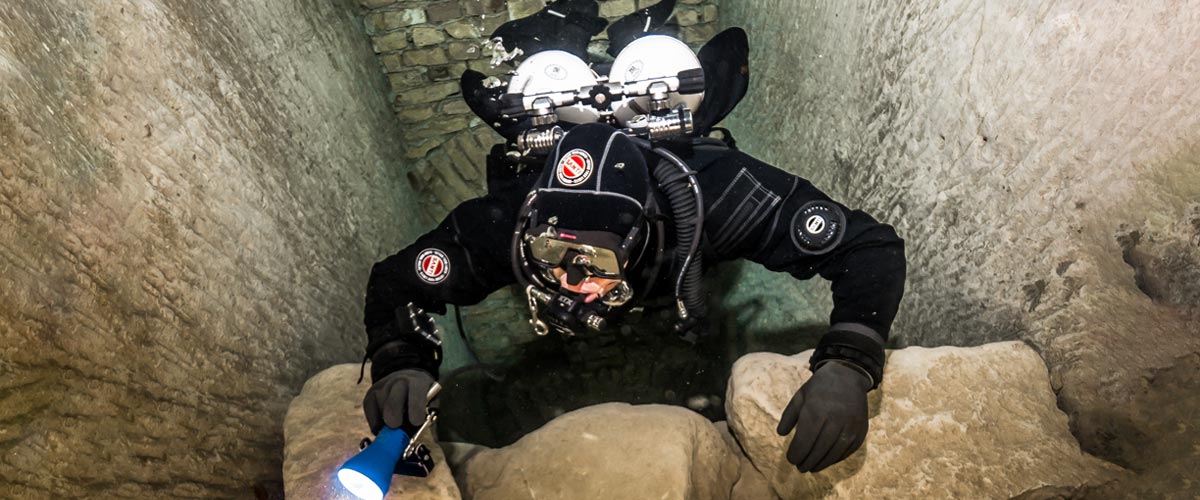
Article by José Pablo Mir
Pictures by Cezary Abramowski
The world of technical diving is exciting. It opens the door to new sites, depths, and bottom times. More importantly, it opens our minds to a new way of planning, facing, and experiencing dives, even those not purely technical.
Becoming a technical diver is a process, and like in other aspects of life, we should find the proper entry point that suits us best based on our knowledge and experience. The Introduction to Technical Diving course from TDI -the world’s largest and most recognized technical diving teaching organization- is the best option for divers who have yet to gain experience in the fundamental aspects of this new practice. The course’s content and its embrace of new techniques and technologies make it possible to acquire a solid foundation to learn and gain experience in this practice properly.
Becoming a technical diver is not something that happens overnight, whether deciding to become one or receiving a certification card stating we are now technical divers. It is a slow process extending farther away than any introductory course. It requires effort and dedication. But it will bring us satisfaction from day one -or two.
It is a matter of mentality
First, we must understand and accept that technical diving, involving greater depths, longer bottom times, exotic gases, virtual or real ceilings, and more, comes with higher levels of risk than the sport diving we have been practicing until now.
Although this discussion usually starts with a warning about risks, as I’ve done in the previous sentence, our practice is not a game of chance.
Technical diving is a rational activity that requires maturity and good judgment, and we will put everything into ensuring that each dive is a successful one -meaning we return from it safe and sound. With this understanding, we will strive to establish a mental attitude more aligned with our practice and its realities.
This new “technical diver” mindset we will develop will lead us to be more cautious in our executions, more analytical in our plans, more rational in our strategies, and more detailed in our procedures.
Experience will keep teaching us to know ourselves better, to keep our anxiety and other emotions under control, and to manage our impulses. Over time, our senses will sharpen, and we will be more attentive to the particulars of the situation we find ourselves in.
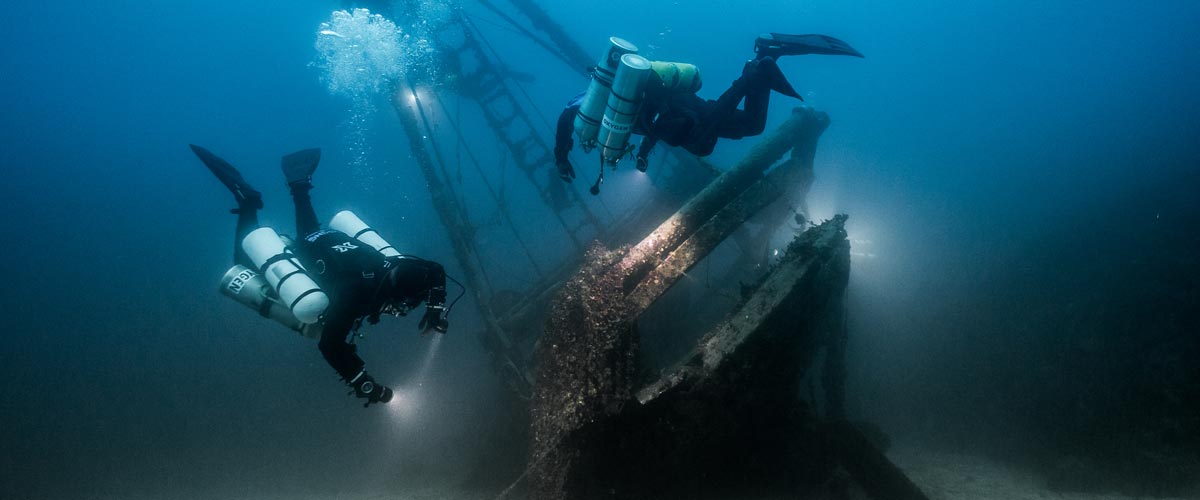
Strategies and procedures
Our strategies, those broad guiding lines tracing the path to follow, from how to approach planning to where, with what, and how we are willing to get there, will be more specific and more practical. Not because they magically become so, but because we will consciously and deliberately frame them that way.
We will establish clear, concise, and realistic procedures. Not only for the undesirable situations that may present themselves but also for those that are part of our dive objectives.
Even though, as technical divers, we often use equipment different from what we were previously accustomed to, it is essential to note that the gear does not make the diver. In a way, we could consider such equipment as the necessary tools to implement what our goal seeks to achieve, according to our strategies and procedures.
Technique plays an important role
We must put our greatest effort into learning and perfecting the different techniques we will be acquiring. Buoyancy, trim, propulsion, cylinder handling, deploying DSMBs and lift bags, valve drills, and more are essential skills we must begin to master to progress in our art. What we cannot do, when we need to do it, can harm us.
Our techniques must be effective and achieve the purpose for which they were devised. But they must also be efficient and require the least resources possible, including the time they take and the effort they demand. Effectiveness and efficiency will prevail over beauty and other considerations that may come to mind, although none of them should be mutually exclusive. A technique executed efficiently and effectively tends to have an inherent beauty.
Refining techniques is a lifelong mission. Some of them will be easy to master from the go; others, on the other hand, will be our life mission and will require many repetitions just to resemble the idea we have in mind of how they should be executed.
We must consider the environment
Our learning, the needs and musts of the practice we engage in, the experience we gradually gain, our strategies and procedures, and even our equipment and tools change with the environment.
Diving in the ocean, everything about us must be suitable for ocean dives. Conditions there rarely emulate those found in a pool, lake, or river. Variable winds and currents, greater depths, visibility conditions, other divers with uncertain skills around us, marine life, maritime traffic, distance from the coast, and many other factors add complexity and uncertainty.
It is never necessary to master the pool on the first day, but planning and aspiring to gradually cope with the ocean’s conditions is essential.
The cost of good training
We are aware that our resources are often scarce in relation to the possibilities of use we could give them if they were not. To a greater or lesser extent, we are part of the economic reality in which we are embedded.
Fortunately, the cost of good technical diver training is not an entry barrier. Comparing training and equipment costs, we see that the former are generally lower. Yes, lower cost for personalized service, essential to our future
performance and safety, than for a series of mass-produced products that are mere, albeit necessary, tools for an end.
The value of good training
The value of the training we received encompasses a range of characteristics, from emotional and methodological to technical and technological. TDI and its Introduction to Technical Diving course offer a deep and modern approach, with a teaching strategy that aims to create thinking divers, not merely obedient ones.
As technical divers, our knowledge is our primary tool. In this type of activity, what we don’t know can harm us.
Is this course optional?
Unfortunately, the fact that this Introduction to Technical Diving course is not a prerequisite for any subsequent training is an invitation to consider it optional. And we all know what usually happens to “optional” under budget constraints.
However, this course should be seen as optional only by those divers who are somehow familiar with the use of technical equipment, who have a mindset more in line with the requirements of this type of diving, who plan and execute the dives the proper “technical” way, who know their gas consumption rate, who are not intimidated by non-decompression tables, who feel comfortable using their dive computers, and know the techniques and have at least an acceptable level of buoyancy, positioning, and propulsion. Those can go straight to a more advanced training course, such as TDI’s Advanced Nitrox.
We must ask ourselves whether or not we are in that group.
Remember our goal: to have fun
Recreational diving is our passion. Jumping into the water carrying heavy equipment and having properly dotted our I’s and crossed our T’s have only one ultimate goal: fun. This is the activity we have chosen as a hobby. We must enjoy it; it must give us pleasure and make us vibrate.
Having a good time is not optional!
Blogs
Four opportunities to go pro in 2024 with Dive Friends Bonaire
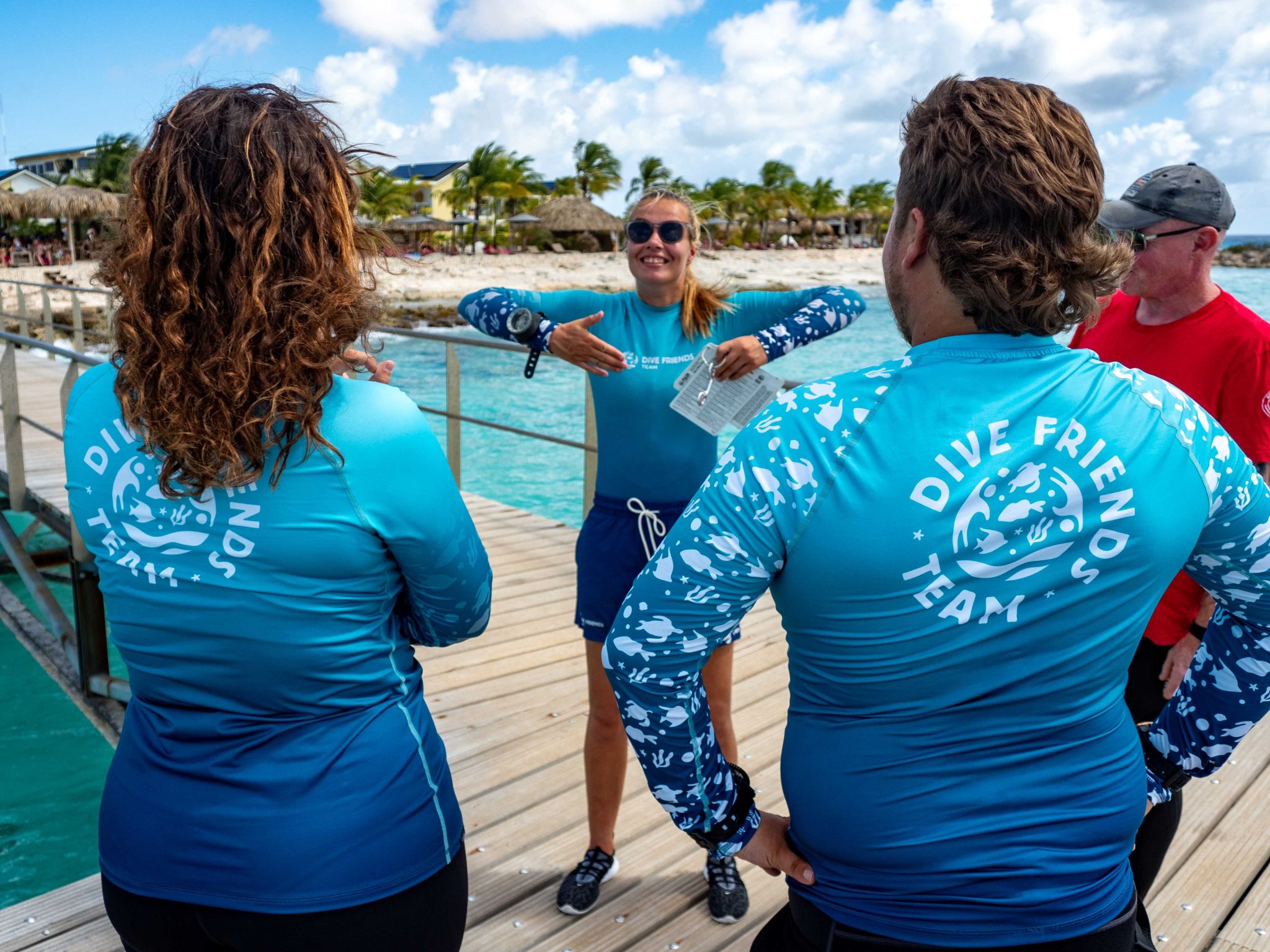
Dive Friends teaches the Instructor Development Course (IDC) several times a year to students who are eager to share their passion for diving with the world.
Dive Friends is known for the personal approach throughout the course. Their in-house course director will lead the students through every essential step, mentoring them to achieve their fullest potential as a dive instructor.
Applications for the following IDC start dates are now open:
- 12 April
- 5 July,
- 20 September
- 29 November
Partnership with Casita Palma
If the student opts for the IDC-Deluxe or IDC-Supreme package, their accommodation will be arranged for them at Casita Palma. This small and quiet resort is within walking distance from Dive Friends Bonaire’s main dive shop location and has everything you need to relax after an intense day of IDC training. Breakfast is included, so the student will always be fuelled and ready for their day.
Contact Dive Friends Bonaire’s Course Director Eddy for more information: coursedirector@divefriendsbonaire.com.
-
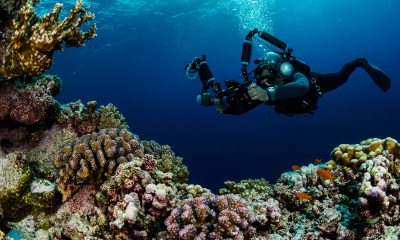
 News3 months ago
News3 months agoHone your underwater photography skills with Alphamarine Photography at Red Sea Diving Safari in March
-
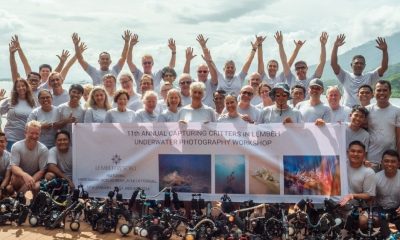
 News3 months ago
News3 months agoCapturing Critters in Lembeh Underwater Photography Workshop 2024: Event Roundup
-
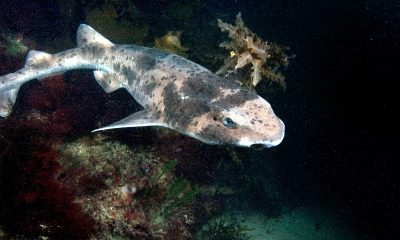
 Marine Life & Conservation Blogs3 months ago
Marine Life & Conservation Blogs3 months agoCreature Feature: Swell Sharks
-
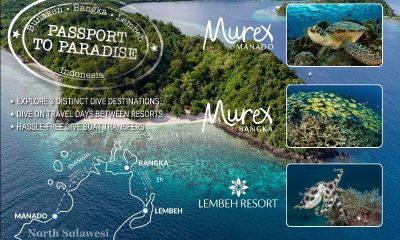
 Blogs2 months ago
Blogs2 months agoMurex Resorts: Passport to Paradise!
-
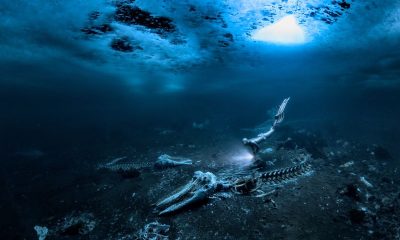
 Blogs2 months ago
Blogs2 months agoDiver Discovering Whale Skeletons Beneath Ice Judged World’s Best Underwater Photograph
-
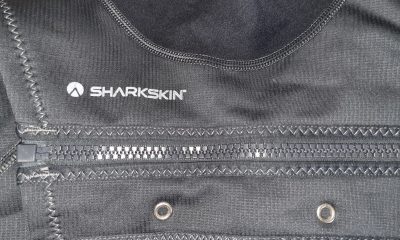
 Gear Reviews2 weeks ago
Gear Reviews2 weeks agoGEAR REVIEW – Revolutionising Diving Comfort: The Sharkskin T2 Chillproof Suit
-
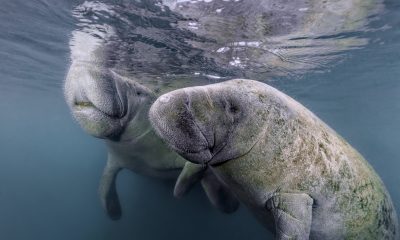
 Marine Life & Conservation2 months ago
Marine Life & Conservation2 months agoSave the Manatee Club launches brand new webcams at Silver Springs State Park, Florida
-
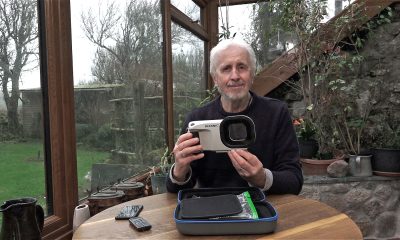
 Gear Reviews3 months ago
Gear Reviews3 months agoGear Review: Oceanic+ Dive Housing for iPhone




